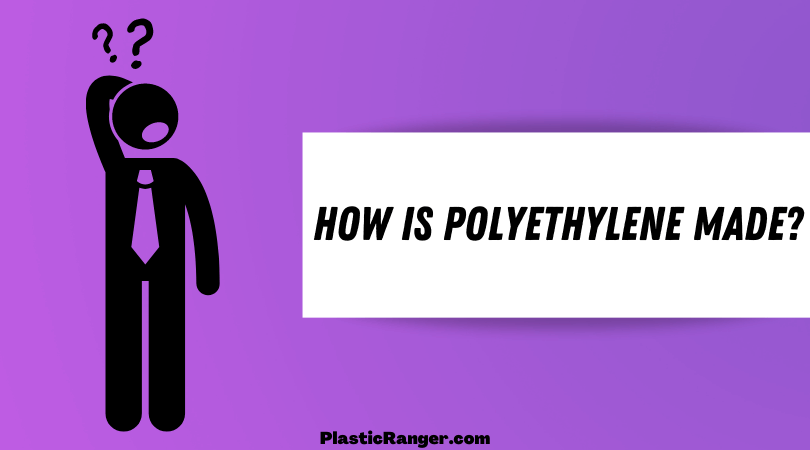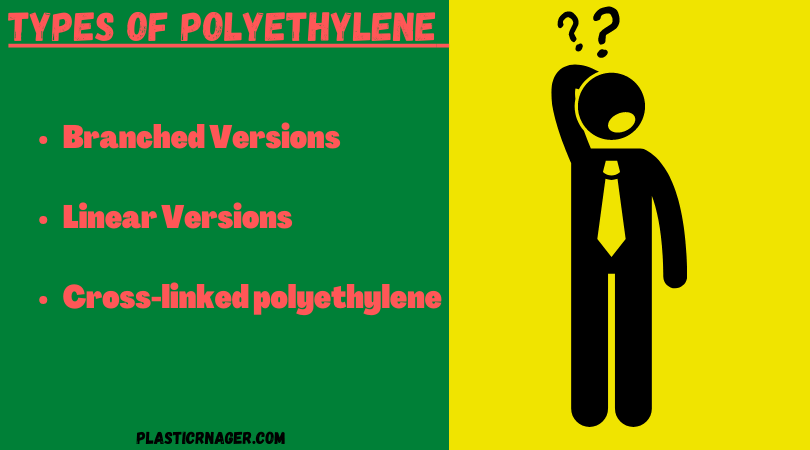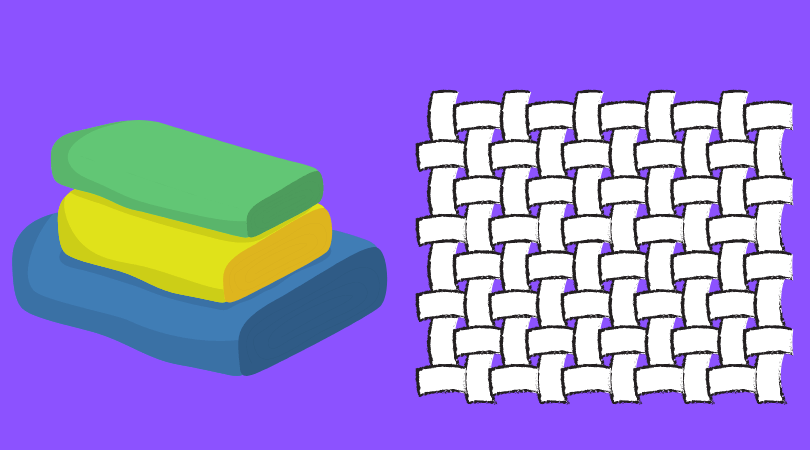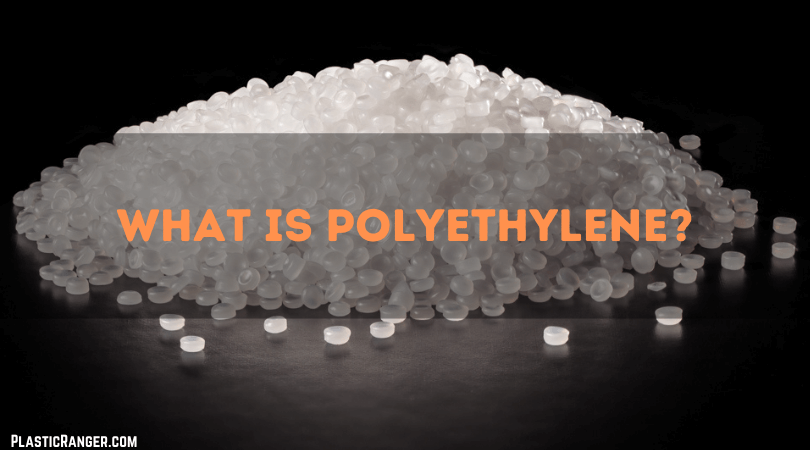Greetings, everyone, I trust that you are all doing splendidly. As a result of thorough research, I am pleased to present a comprehensive handbook on polyethylene material.
What is Polyethylene
Polyethylene is a thermoplastic known for its wide array of applications and variables in its crystalline structure. The key properties are lightweight and durable. As a result, it is one of the most used thermoplastics globally, with millions of tons being utilized worldwide. It has various applications like detergent bottles, shopping bags, food wrapping, etc. It’s a part of polyolefin resins.
Slitting and spurning of PE into synthetic fibers are common to modify its properties, likewise rubber.
Polyethylene (C2H4)n is created by the polymerization of ethylene monomer filtered from petroleum.
How is Polyethylene Made

It all begins with adding ethylene (monomer). Next, PE material is made by filtering hydrocarbon fuels into lighter groups called “Fractions.” Finally, some of that fraction is blended with catalysts to create plastics.
The entire process, from the beginning of filtration to blending catalysts, is called polymerization.
Polymerization begins with adding ethylene (monomer).
Ziegler-Natta and Metallocene catalysts are primarily used for polymerizing polyethylene.
History

The earliest version of polyethylene was found in the year 1933 in England by imperial chemical industries Ltd. They acquired the patent for the same in 1937 and began commercial production in 1939.
It is said that the first-ever use of polyethylene was done to manufacture insulators for radar cables for World War II.
In the year 1930, a high-density version of polyethylene was found by an American chemist named Carl Shipp Marvel, working for E.I. du Pont de Nemours & Company (now DuPont Company).
However, Carl didn’t realize the potential of the polymer he created, so it was passed on to Karl Ziegler, a German chemist working for Max Planck Institute for Coal Research, to take credit for inventing the linear version of HDPE.
The methods were later streamlined and made much cheaper by Italian chemist Giulio Natta.
After that, various innovative practices led to the creation of many polyethylene variants, now commercially used by almost every major country.
Types of Polyethylene

The most common types of polyethylene are:
- Branched Versions
#1 Low-Density Polyethylene (LDPE)
#2 Linear low-density polyethylene (LLDPE)
Linear Versions
#1 High-density polyethylene (HDPE)
#2 Ultra-high-molecular-weight polyethylene (UHMWPE)
- Cross-linked polyethylene (PEX or XLPE)
Interesting Read – Plastic Thermoforming Mold: Information about Male Vs. Female Molds
High-density polyethylene (HDPE)
High-Density polyethylene is (HDPE) an inexpensive thermoplastic known for its linear structure and low branching capabilities.
It is produced at a low temperature of 70°C to 300°C and a 10-80 bar pressure.
It is extracted from a mixture of gases like methane, ethane, propane, crude oil, and gasoline.
The two major methods to produce HDPE is 1) Slurry Polymerization and 2) Gas Phase Polymerization.
Mainly available in sheet and rod forms, HDPE is also straightforward to fabricate and weld using standard thermoplastic welding equipment.
Properties of HDPE
- HDPE has excellent resistance to mostly all the solvents
- HDPE Melting point: 120-140°C
- Greater tensile strength compared to other variations of PE.
- Fabulous electrical insulating properties
- Decent low-temperature resistance
- Meager water absorbtion
- Meager resistance to hydrocarbons like aliphatic, aromatic, halogenated
- Inexpensive and good processability
- Density of HDPE: 0.93 to 0.97 g/cm3
- Modest resistance to oils and greases
- Impressive resistance towards alkalis, alcohols, and diluted acids
Advantages of HDPE
1. HDPE is corrosion-resistant, making it suitable to produce essential public infrastructure like underground piping as it wouldn’t rust by weather effects and is long-lasting.
Sterilization of HDPE makes it perfect for food and beverage storage containers.
2. Easy malleability and moldability is another standout feature for HDPE materials as it increases its applications substantially.
The material is rigid and has an impressive melting point of 210 to 270°C. However, once it melts, it can produce many products like water tanks, cutting boards, detergent bottles, shampoo bottles, pipings, etc.
3. HDPE material has a fabulous strength-to-density ratio of 0.93 to 0.97 g ( it might not seem a lot compared to LDPE, but there’s a catch ). When seen under a microscope, HDPE molecular structure differs from LDPE. It has a linear structure with little branching, which results in a stronger molecular structure and greater tensile strength. That’s the reason why a 60 grams HDPE cup can hold about a gallon of liquid without any bending.
4. HDPE is an easily recyclable material. Recyclability is an essential factor, especially these days when the global carbon footprint is on the rise.
Recycling HDPE can save up to 50% of your material cost, and no worries about quality as recycled HDPE material is said to be as good as “virgin” material.
Disadvantages of HDPE
- High Mold shrinkage
- high-frequency joining and welding are extremely difficult
- Poor UV and low heat resistance
- Stress cracking is evident
- Lower stiffness than other mainstream thermoplastic Ex. Polypropylene
- Non-resistant to oxidizing acids
- Considerably, high thermal expansion.
Applications of HDPE
Fantastic mechanical properties make HDPE suitable for many high-end applications across various industries.
- Consumer Goods
- Packaging Applications
- Fibers and Textiles
Interesting Read – Injection Molding in Medical Industry | The Pros of Medical Device Injection Molding | The Importance of Plastic Injection Molding
1. Consumer Goods

HDPE’s inexpensiveness and easy processability with injection molding and extrusion molding make it a highly usable consumer goods application.
Products like kitchen-wares, ice trays, food packaging, dustbins, etc.
2. Packaging Applications
Impact strength and reasonable chemical resistance help HDPE polyethylene with applications in industrial bulk containers, jerry cans, drums, fruit juices, crates, and bottles to keep liquid foods.
3. Fibers and Textiles

High tensile strength and easy processability boost HDPE’s competitiveness for manufacturing products like industrial and decorative fabrics, fishing and sports net, ropes, nets, etc.
Other applications include fuel tanks – for the automobile industry, telecommunication cables –wires and cables, pipes fr drainage, industrial uses, cable protection, large inspection chambers, gas, water, sea downspout, etc. – Pipes and Fittings.
Low-Density Polyethylene (LDPE)
Low-Density Polyethylene material is made up of 4,000-40,000 carbon atoms, with many short branches. It’s a semi-rigid and translucent polymer with a higher degree of short and long-side branching.
The free-radical polymerization process also produces it – pressure – 1000-3000 bar and temperature 80-300°C.
The two most common methods for production are the tubular reactor method and stirred autoclave method. The tubular method is utilized more because it has a higher ethylene conversion rate.
Properties of LDPE
- Melting point: 105 to 115°C
- Density: 0.910–0.940 g/cm3
- Temperature resistance – 95°C for shorter times and 80°C for continuous operations
- Fantastic electrical insulating properties
- Meagre water absorbtion
- Decent resistance to acids, alcohols, and dilute alkalis
- Exhibits high impact strength in low temperature, coupled with good weatherability.
- Inexpensive compared to other thermoplastic materials with good processing qualities.
Disadvanatges of LDPE
- Highly flammable
- High-frequency welding and joining are tough
- Stress cracking is evident sometimes.
- Meager UV resistance
- High permeability to carbon dioxide
- Low strength and stiffness in extreme temperatures
Applications
Without a doubt, the most common application of LDPE is plastic bags. Products like dispensing bottles, wash bottles, and manufacturing containers are also some other prime applications.
Packaging: LSPE is highly utilized for packaging applications, particularly in the pharma industry. Caps, liners, trash bags, lamination closures, etc., are some products suing LDPE.
Pipes and Fitting: Low-Density Polyethylene is used to manufacture water pipes thanks to its ability to resist water for longer periods of time coupled with good plasticity.
Linear Low-Density Polyethylene (LLDPE)
LLDPE is structurally quite similar to LDPE. It is produced by the basic polymerization process involving ethylene monomer with 1 butane and smaller amounts of 1 hexaene and one octene using metallocene catalysts.
The structural design of LLDPE is a bit different with uniform branches (rather than having longer branches like LDPE) and a linear backbone.
These branches’ specialty is to skid against each other within elongation without entangling with LDPE.
Properties of LLDPE
- Good stress crack and smack resistance
- Semi-transparent with natural milky color.
- Decent alcohol barrier properties.
- Good flexibility with high impact strength
Ultrahigh-Molecular-Weight Polyethylene (UHMWPE)
Ultrahigh-molecular-weight polyethylene is at least ten times heavier( between 3.5 and 7.5 million AMU) than High-Density Polyethylene material.
- It is polymerized using metallocene catalysts and ethane units in a structure where ethane units are bonded together in the UHMWPE structure.
- UHMWPE is typically composed of 100,000 to 250,000 monomers per molecule.
- The infamous variation polyethylene is almost immobile. That’s the reason it is used in the most pugnacious environments at a modest temperature.
- Even in high temperatures, it shows excellent resistance towards solvents except for strong oxidizing materials and aromatic, halogenated hydrocarbons.
- Several fantastic mechanical properties like impact strength, high abrasion resistance, and low cooperativeness against friction make UHMWPE.
Cross-linked Polyethylene ( XLPE)
High-density crosslinked polyethylene or XLPE is a high-end polyethylene material and is specially made for complex applications.
XLPe is manufactured using polyethylene under high pressure involving organic peroxides. The crosslinking polymer structure makes the polymer adapt to complex applications like hydronic radiant heating and cooling systems and insulation of high-voltage electric cables.
Key Features of XLPE

- High electrical and insulation properties
- Mechanically stronger
- Higher abrasion resistance
- Inexpensive
- High extrusion speed on standard lines
- Hydrolysis resistance
Fascinating Read – What is Condensation Polymerization? | The Definitive Guide
Differentiation of Polyethylene Types

[su_table responsive=”yes”]
| HDPE | LDPE | LLDPE | UHMWPE | XLPE | |
| Polymer Full Form | High-Density Polyethylene | Low-Density Polyethylene | Linear Low-Density Polyethylene | Ultrahigh-Molecular-Weight Polyethylene | Cross-linked Polyethylene |
| Structure | Linear branching | Both short and long-chain beaching | Short-chain branching | High-end bond within ethane units(100,000 to 250,000 monomer units per molecule) | Cross-linked bonds |
| Density | 0.941-0.965 g/cm3 | 0.910-0.925 g/cm3 | 0.91-0.94 g/cm3 | 0.91-0.95 g/cm3 | 0.91-0.34 g/cm3 |
| Catalyst and process | Ziegler-Natta catalyst | Radical Polymerization – autoclave method or tubular method | Ziegler-Natta catalyst or metallocene catalyst | metallocene catalyst method | Peroxide is built into the resin, which creates a free radical. |
| Attributes | 1) excellent resistance to mostly all the solvents 2) Fabulous electrical insulating properties 3) Meager water absorbtion 4) Modest resistance to oils and greases | 1) Decent resistance to acids, alcohols, and dilute alkalis 2) high impact strength in low temperature, coupled with good weatherability 3) Inexpensive and good processing qualities | 1) Good flexibility and high-impact strength 2) Semi-transparent with natural milky color 3) Good stress crack and smack resistance | 1) High impact strength and abrasion resistance 2) low-cooperativeness against friction 3) almost immobile | 1) Hydrolysis resistance 2) High electrical and insulation properties 3)mechanically stronger |
| Melting point | 130.8 °C | 105-115°C | 122°C | 155 – 200°C | 150 – 170°C |
[/su_table]
Thus, are all types of polyethylene materials.
Why is PE preferred so much?

As we’ve discussed different polyethylene variants, you guys must’ve realized the additional benefits it can provide to the manufacturer.
All the variants are suitable in their respective applications and provide supreme quality without hampering the budget. PE is mainly considered a commodity plastic, opted by mostly product design companies looking to create quality products from scratch. Easy processability with Injection molding and extrusion methods ( which we’ll discuss ahead in detail) makes PE a supreme choice over several thermoplastic materials.
Processing of PE –
All the Polyethylene material variants can be utilized in major plastic manufacturing methods like Injection molding, Extrusion, Blow molding.
HDPE highly recommends injection molding, extrusion operations (blow and cast films, cables, etc.), and blow molding. However, the best processability will be found in injection molding. On the other hand, LDPE is best processed in extrusion because of its excellent electrical resistance properties, but it also is processed in injection and roto-molding, respectively.
UHMWPE is mainly processed in compression molding, sintering, ram extrusion, and gel spinning. The material has a meager flow rate, resulting in more utilized in general methods like injection and blow molding.
Polyethylene isn’t very compatible with 3D printing for a variety of reasons. But efforts have been made to make to improve 3D printing’s suitability with recycled PE.
Let’s look at a comparison of HDPE and LDPE materials processability with injection molding and extrusion methods.
[su_table responsive=”yes” alternate=”yes” fixed=”no” class=””]
| HDPE | LDPE |
| Injection molding | |
Mold Temperature – 10-80°C | – |
| Melt Temperature – 200-300°C | Melt Temperature – 160-260°C |
| Increasing the mold temperature can improve the appearance and surface finish of the component. | Material Injection pressure – Upto 160 MPa |
| Drying is not needed if stored perfectly | Post mold shrinkage may vary somewhere between 1.5 and 3.5% |
| Extrusion | |
| Melt Temperature – 200-300°C | Melt Temperature – 180-240°C |
| Cylinder temprature – 180 – 205°C | Extrusion coating temperature – 280 – 310°C |
| Compression Ratio – 3:1 | A three-zoned is advisable with an L/D ratio – of 25 |
[/su_table]
PE Recycling and Its Effects on the Environment –

PE is not a toxic material (at least in solid form). However, it can be hazardous if inhaled in vapor form or if it comes in contact with your eyes or skin. For HDPE and LDPE, resin identification codes are “2” and “4,” respectively.
Both the material variants are non-biodegradable in nature and contribute a sizeable chink to world plastic waste products.
HDPE and XLPE are considered safe for human consumption and are often used for storing potable water.
Interesting Read – What is 3D Printing? | Types of 3D Printing | Applications of 3D Printing | Advantages & Disadvantages
The Future of Polyethylene
As per an assessment conducted by Market Research Future global PE market will touch a massive USD 183 Billion in market size showing a CAGR of 5.82% from 2018 to 2025.
Market dynamics must be significantly changed due to the covid-19 pandemic that monumentally shattered the global economy, especially global manufacturing.
The largest segment to consume to consumer polyethylene in the packaging industry is expected to remain the largest till the forecast period. The second-largest end-user segment is the construction industry. Its been increasingly used to manufacture construction materials such as floorings, roofings, cover building materials, countertops, seal-off rooms. Demands for these products will keep the consumption of polyethylene in the construction sector healthy in the future.
Siniliurily, the consumer goods industry is also expected to significantly grow polyethylene usage during the forecast period due to an increase in demand for sports goods, fashion apparel, housewares, house boxes, and toys.
The future growth in the construction sector (Asia-Pacific), automobile and packaging industry (North America) can boost worldwide PE growth.
FAQs
Let’s have a look at the frequently asked questions on polyethylene. Let’s take a deep dive.
1. Does HDPE absorb water?
Ans. According to the FDA and USDA guidelines, HDPE doesn’t absorb water and moisture and is lightweight, making it ideal for making chemically resistant products, mainly used in food applications.
2. How do you glue polyethylene?
Ans. As polyethylene has a non-stick surface, it can easily and with most types of glues. However, other ways to bind polyethylene together are solvent welding and Ultrasonic welding.
3. Which are the top 5 polyethylene manufacturing companies?
Ans. The top five PE manufacturing companies are:
- Dow Chemical
- Exxon Mobil Corporation
- LyondellBasell
- SABIC
- Sinopec Corporation
4. Which plastic is stronger? Polyethylene or polystyrene.
Ans. Making a very straightforward comparison, polyethylene is more durable and resistant in HDPE and UHMW forms, making it perfect for the construction industry. On the other hand, polystyrene is easy to shape and form, making it more ideal for engineering packaging purposes.
5. What is the difference between polyethylene and polypropylene?
Ans. The basic comparison between both the material tells us, as said already, that polyethylene is easier to stretch, making it ideal for food packaging applications. On the other hand, polypropylene is not that flexible but much more difficult to break, making it ideal for automotive and electronics applications.
6. What is polyethylene piping?
Ans. HDPE form of polyethylene is often used as piping material. It can be melted and reformed. It is rugged, flexible, and durable. It has excellent chemical and environmental stress crack resistance.
Suggested Read –
- What is PEEK Material? | A Simple and Detailed Guide
- What is PETG Material? | The Definitive Guide
- What is Polystyrene? | The Definitive Guide
- What is PTFE (Polytetrafluoroethylene)? | The Complete Guide
- What is PVDF (Polyvinylidene Fluoride) | A Detailed Guide
- Plastics Vs. Polymers | What are the Differences?
- Top 10 Injection Molding Materials (And Why They are the Best)
- Top 10 Injection Molding Defects (And How To Prevent Them)
- Physical Properties of Plastic Materials | The Complete Guide
The Takeaway
Thus was my take on PE material with all variants. It’s a useful commodity plastic that can help improve your shop floor productivity and profits. With its variations like LDPE, HDPE, UHMW, and LLDPE, PE is a fantastic polymer that comes in handy among several applications.
Kindly share your reviews in the comment box.
Quick Navigation


This guide on polyethylene is incredibly informative! I learned so much about its different types and applications. It’s fascinating to see how such a common material plays a crucial role in everyday life. Thanks for breaking it down so clearly!
Thanks
Great read! I had no idea there were so many different types of polyethylene and their various applications. The breakdown of low-density versus high-density was especially helpful. Looking forward to learning more about sustainability efforts related to plastics!
Thanks
Great post! I learned so much about polyethylene and its different types. It’s fascinating to see how such a versatile material impacts our daily lives. Thanks for breaking it down so clearly!
Thanks
This guide on polyethylene is incredibly informative! I had no idea there were so many types and applications. The breakdown of properties and uses really opened my eyes to how versatile this material is. Great job on making complex information easy to understand.
Thanks